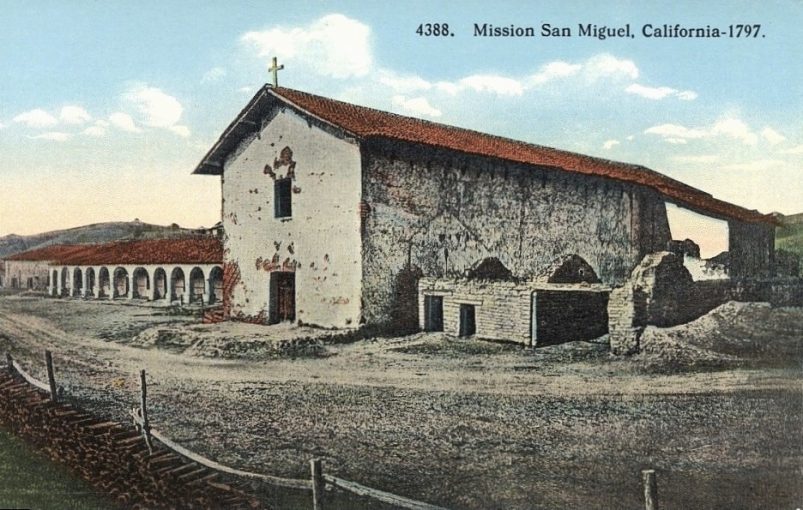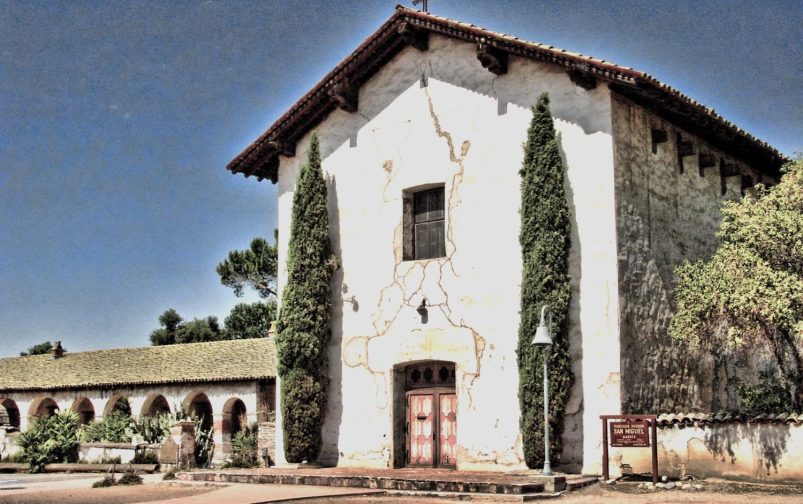On July 25, 1797, Father Fermín Lasuén dedicated Mission San Miguel Arcángel in a fine valley near the juncture of the Salinas and Nacimiento Rivers. The Franciscan Fathers had chosen this spot because it was a stopping place halfway between San Luis Obispo and San Antonio Missions. The local native Americans knew about mission activities in the adjoining areas and came in great numbers to welcome the Mission Padres.
Soon, San Miguel became a fairly prosperous mission, despite poor soil and hot climate did not compare well with the more fertile coastal regions. Hundreds of Indian converts worked in the mission vineyards, fields, and as herdsmen. Other Natives learned trades such as masons, carpenters, blacksmiths, soap makers, leather workers, weavers, cooks, and butchers. There were also Native artists whose work has endured to the present day.

Without an architect or engineer, the Mission Padres built a plain, rectangular adobe church lacking a bell tower. Indian neophytes had to fetch the wood for the roof and ceiling beams from mountains 40 miles away. Then Estevan Munras of Monterey came to San Miguel and taught a few Indians the art of fresco painting. They decorated the bare walls of the church with intricate designs that are still clear and have not been re-touched.
At one time, San Miguel Arcángel Mission controlled lands up and down the Salinas River for 50 miles and operated a rancho at San Simeon on the coast. Eventually, Mexican settlers first took over all mission valuables, followed later by American immigrants. The last Padre left San Miguel in 1840, and mission buildings were sold shortly thereafter. The monastery became a shopping center, including the most popular saloon on El Camino Real.
What was left of Mission San Miguel Arcángel was repossessed by the Roman Catholic Church in 1878. The Franciscan Fathers returned in 1928. Since then, an amazing recovery has been made, and the years of neglect erased. The monastery edifice, now a museum, is fronted by a colonnade of arches where visitors stand in the shade to look out to a famous cactus garden.
